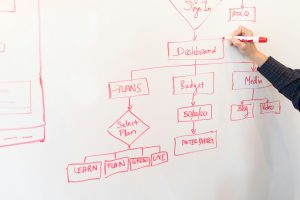How Generative AI is Revolutionizing Classroom Teaching
In recent years, the education industry has been rapidly evolving with the integration of technology. From online classrooms to e-learning platforms, technology has been playing a crucial role in shaping the way students learn. However, the most recent and perhaps the most impactful advancement in the field of education is the introduction of generative artificial intelligence (AI). This cutting-edge technology has been redefining the way classroom teaching is conducted, providing a personalized and efficient learning experience for students. In this article, we will delve into how generative AI is revolutionizing classroom teaching and its potential impact on the future of education.
The Evolution of Classroom Teaching
Over the years, traditional classroom teaching involved a one-size-fits-all approach, where a teacher would deliver the same lessons to a group of students with varying learning abilities. This method often resulted in students with different learning styles being left behind or feeling disengaged. With the rise of technology, online learning platforms emerged, providing students with the flexibility to learn at their own pace and in their preferred learning style. While this has significantly improved the learning experience, it still lacked the human connection and personalization that traditional classroom teaching offered.
The Rise of Generative AI in Education
The integration of generative AI in education bridges the gap between traditional classroom teaching and online learning. It combines the benefits of personalized learning with the human connection and guidance of a teacher. Generative AI uses algorithms to analyze student data and create adaptive learning pathways, tailoring the content and pace of lessons according to each student’s needs. This not only makes learning more efficient but also keeps students engaged and motivated. With more and more schools and universities adopting this technology, it has the potential to revolutionize the education system.
Individualized Learning Experience
Generative AI creates a unique learning experience for each student, as it takes into account their learning styles, strengths, and weaknesses. This means that students who may struggle with certain subjects or concepts can receive more personalized attention and support, while high-achievers can be challenged with advanced materials. This individualized approach allows students to learn at their own pace, resulting in better understanding and retention of information.
Real-Time Feedback for Improved Learning
One of the most significant advantages of generative AI is its ability to provide real-time feedback. Through continuous assessment and analysis, the AI can identify areas where a student may be struggling, and provide immediate feedback and support. This not only helps students to fill the gaps in their knowledge but also encourages self-reflection and independence in learning. It also allows teachers to monitor the progress of each student and intervene when necessary, making the learning process more efficient and effective.
Efficient Classroom Management
Generative AI can also assist teachers in managing their classrooms more efficiently. By analyzing data on student behavior, AI can predict potential disruptions and provide teachers with proactive strategies to address them. It can also assist in managing class schedules, grading, and lesson planning, giving teachers more time and energy to focus on their students’ individual needs.
The Future of Classroom Teaching
As technology continues to advance, the role of generative AI in education is set to grow. In the future, AI can potentially replace traditional exams with adaptive assessments, providing a fairer and more accurate evaluation of each student’s knowledge and capabilities. It can also support the implementation of personalized learning in schools, where students can receive tailored education plans that align with their future career goals. Furthermore, AI can enable teachers to track and monitor each student’s progress throughout their academic journey, providing a more comprehensive understanding of their strengths and weaknesses.
Conclusion
Generative AI has the power to revolutionize the way we teach and learn, making education more inclusive, efficient, and effective. By integrating this technology into the classroom, we can create a personalized learning experience for each student, which ensures that no one falls behind. While it may not replace the role of a teacher, it can significantly aid in managing classrooms, providing feedback and support, and enabling a more meaningful human connection between teachers and students. With the continuous development in AI, its potential for transforming the future of education is limitless.











